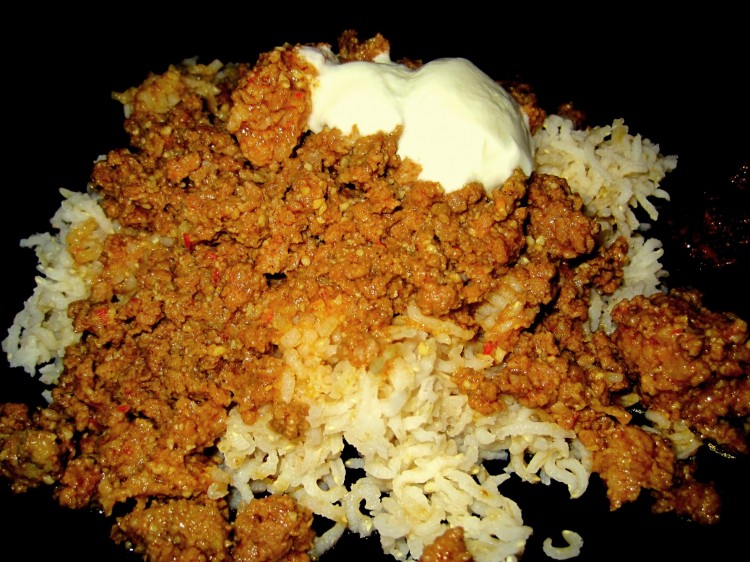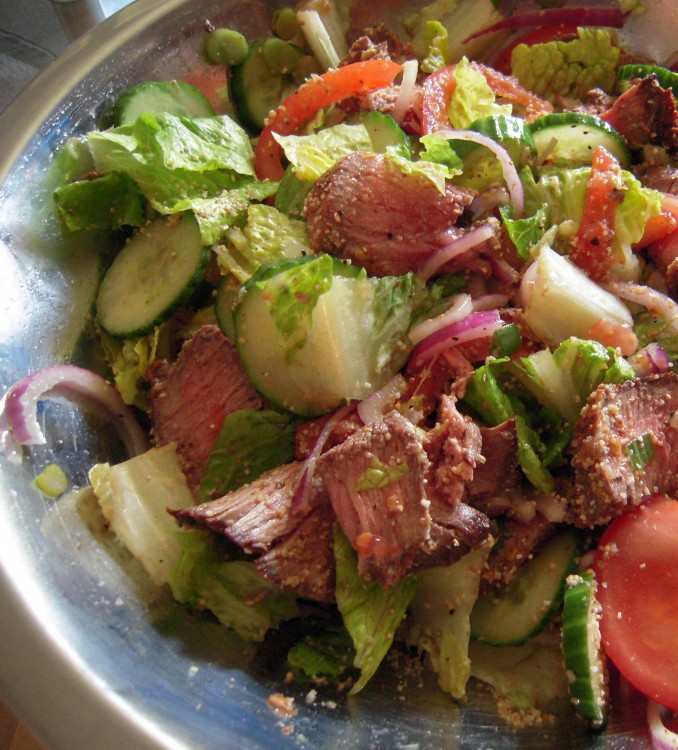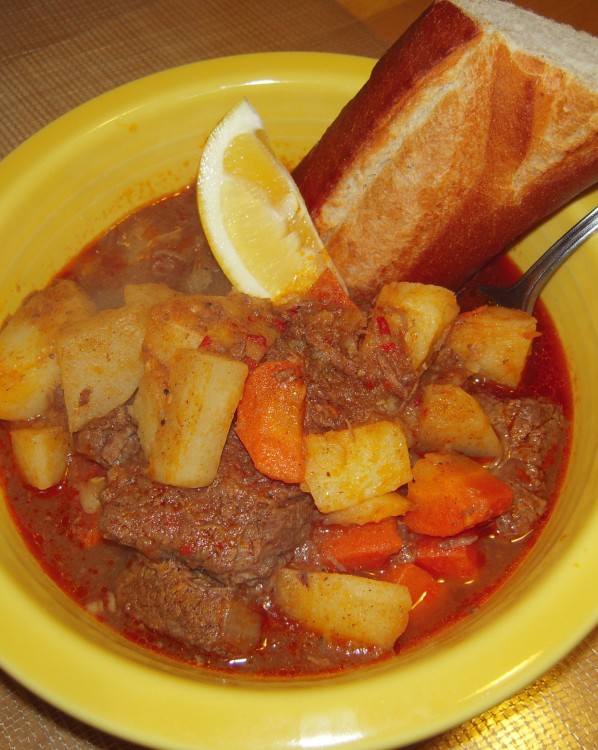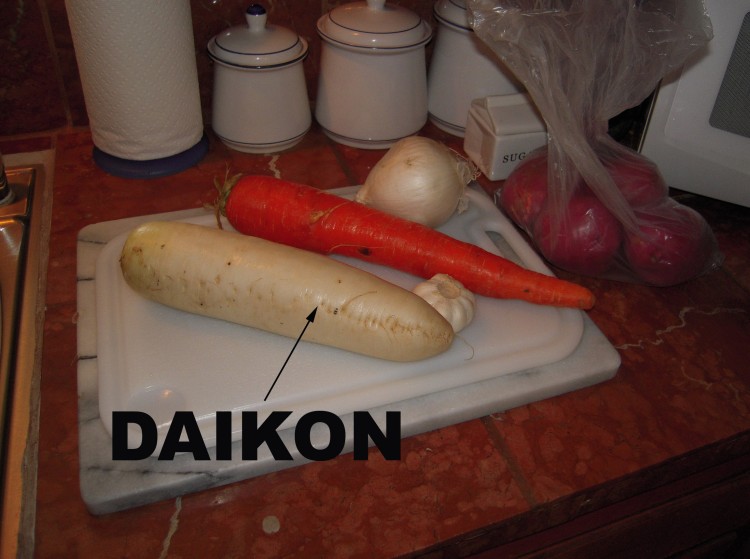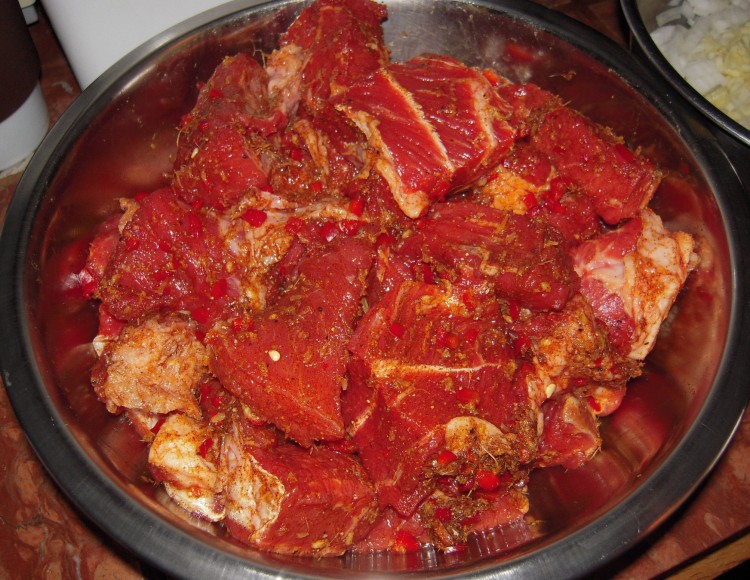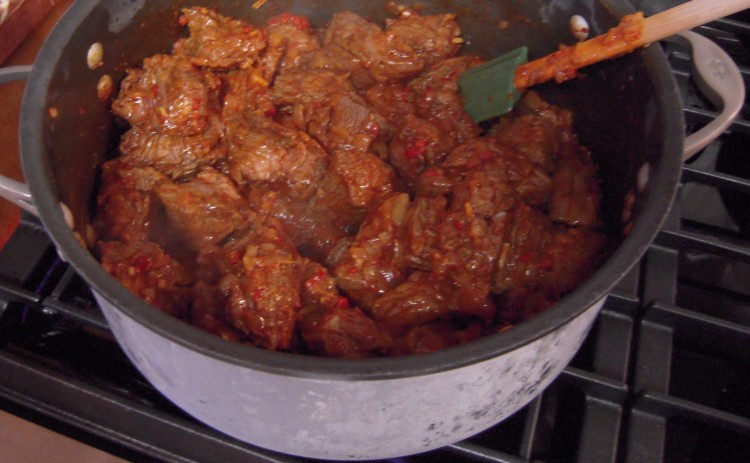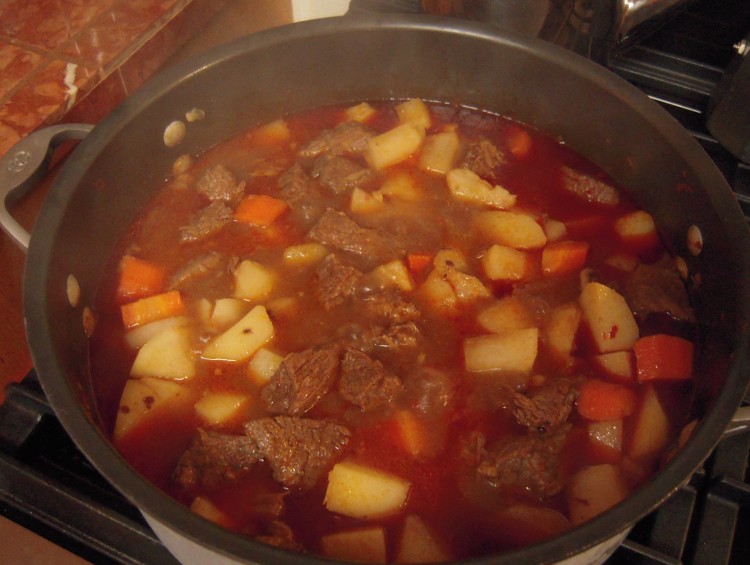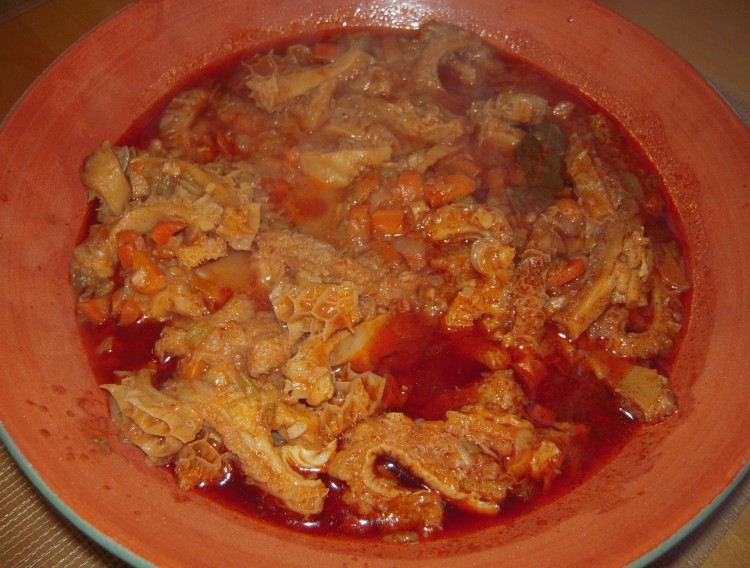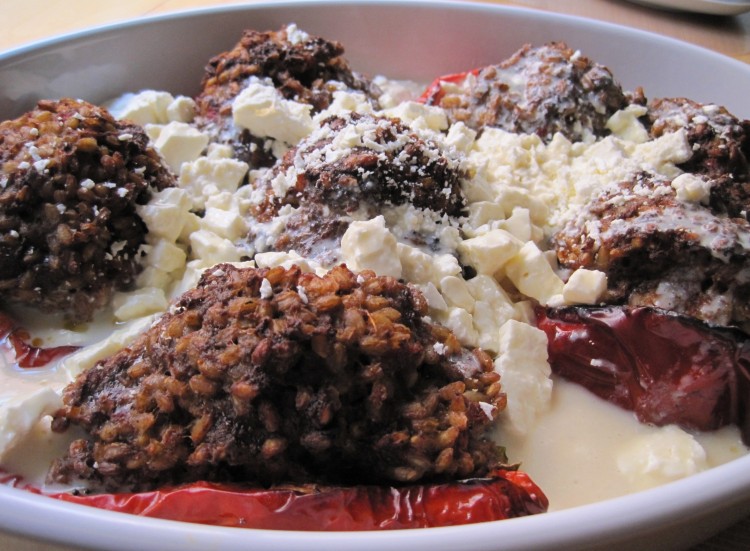
Stuffed peppers with farro, ground meat and feta with lemon sauce
The gist of this post is: farro better than rice in stuffed peppers, in my opinion.
My Mom always used rice, lots of tomato product and green bell peppers in her version, which I still love, but I do something different that addresses three issues for me:
1). Rice can be mushy. It does not hold up and it does not offer any kind of contrast to the ground meat. Farro, on the other hand, is firm and chewy, even when overcooked.
2). Too many tomatoes. I have allergies and do better with a lesser quantity.
3). Green bell peppers are not sweet. They don’t caramelize well because they are not mature enough to have developed a significant sugar content. I believe older people keep using them exclusively because they (the peppers) were the only ones readily available way back when and they (the older folk) are used to them. Don’t break my limbs for saying that. I can tell you something else about older people: as a general rule, Americans 70 and up are the ones who order coffee at the beginning of a meal and drink it the whole time. Ask your server friends – they’ll tell you. When you hang out now and again with a group of older East Bay bowling ladies, you learn quite a bit. Ask me how many deviled eggs and Jell-O rings show up at their potlucks. Anyhow, I use red bell peppers because they turn out nice and sweet.
Back to the farro.
Farro, a type of wheat that is the mother of all grains, is catching on again after having fallen out of favor for quite some time. This ancient grain, apparently first cultivated in Egypt some 6,000 years ago and then catching on with the Italians, is not so easy to grow, and yields a small take. It was left in the dust in favor of easier, higher-yielding crops.
Nowadays, though, people are rediscovering its quality. Not only low in gluten and high in fiber, protein and vitamin B, farro has a chewy texture and is the perfect chameleon -readily absorbing surrounding liquid and flavor. Frankly, I prefer farro to that other Really Big Thing Now, quinoa. Quinoa can be dressed up enough to taste good, sure, but it’s finicky and spindly compared to the big-ass nature of farro, which easily works as comfort food.
When you shop, look for farro perlato, which means that the hull has been removed and it does not have to be pre-soaked.
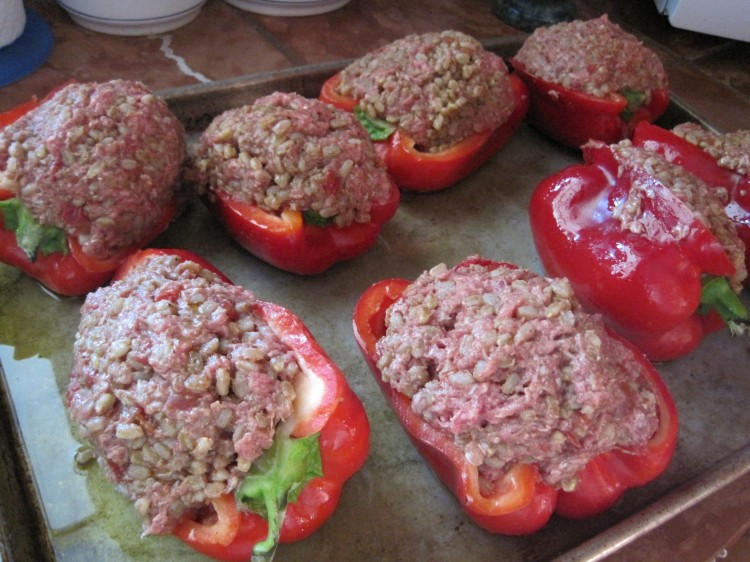
Stuffed peppers ready for the oven
I warn you now: this is a really, really good stuffed pepper. Yes, there is lots of meat in there, but half a pepper with a nice salad and maybe a roll provides a substantial din-din. A really big eater, like my slender hubby, Steve, can eat two, but only if he eats nothing on the side.
I provided a recipe for a large quantity because these peppers improve with age. They make great leftovers a day or two later. Don’t fool around with two measly peppers – go all out.
This is a frugal dish. You’ll even use the excess farro cooking water to make your sauce. If you get the meat at a good price, you can feed a number of guests without spending a fortune.
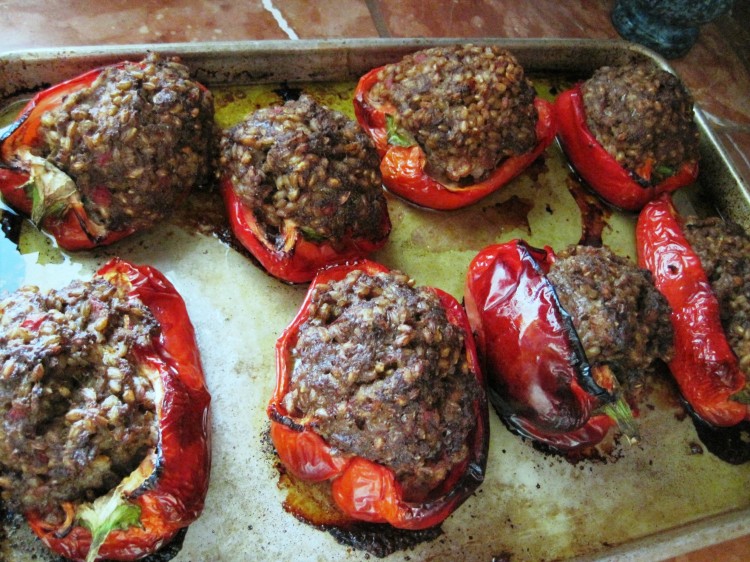
Stuffed peppers right out of the oven
I use ground beef, and sometimes a mix of ground beef and ground pork. Ground lamb is luxurious and tastes wonderful in this dish, but not everyone likes the strong taste and it amps up the cost. That said, if you like lamb, go for it. Ground poultry lacks richness, aka fat. If you insist on using it, add at least 1/4 cup of olive oil to the stuffing to help combat dryness.
Stuffed Peppers with Meat, Farro & Feta in Lemon Sauce
Makes 10 servings
6 cups chicken stock
2 cups farro perlato
5 extra large red bell peppers
1 can (14.5 oz) petite diced tomatoes
1 teaspoon ground thyme
1 teaspoon ground oregano
1 teaspoon ground marjoram
1/2 teaspoon paprika
1/2 teaspoon ground cumin
1/2 teaspoon ground cinnamon
1/2 teaspoon freshly ground black pepper (plus more for sauce)
Sea salt – to taste (I use 1-1/2 to 2 teaspoons)
3 pounds ground beef (no leaner than 90%) see text above for meat discussion
1/2 cup olive oil
2 large eggs
Juice of 1 large lemon
8 ounces cubed/crumbled Feta cheese
1). Bring stock to a boil and add farro; cook 25 minutes, or until done.
2). While farro cooks, put tomatoes, spices and sea salt in a large bowl (large enough for all the stuffing) and mix, so the dried spices can open up.
3). Drain farro and reserve stock for sauce.
4). Add drained, hot farro to bowl with tomatoes and spices; mix/fold in well with spatula, and let sit for 30 mins on counter.
5). While farro mix is cooling, rinse peppers and cut in half, lengthwise. Try to leave the half-stems intact as they look nice. Removes seeds and trim veins, but do not puncture peppers.
6). Dry peppers well and place on two sheet pans (you want some breathing room on the sheet pans). Have olive oil and a pastry brush handy.
7). Fold meat into farro with a spatula after the 30 minutes are up. Do not overwork mixture, but be sure it’s well combined.
8). By hand, stuff each pepper half generously. Ball up the stuffing, pack it in and mound it up. Pat stuffing smooth and round for each pepper.
9). When you have your five big stuffed halves on each pan, put 1/4 cup of olive oil in each pan.
10). With a pastry brush, brush the outside of each pepper with oil – but not the stuffing. Brush the bottom of the pan where the peppers are sitting, too. Make sure peppers have some room. You don’t need oil or breadcrumbs on the stuffing; the tops will get crispy and brown as-is.
11). Bake at 350 deg. F. for a hour to an hour and a quarter, or until the internal temp is 165 deg. F.
12). Move peppers carefully (with tongs and a large spatula for support underneath) to a broad casserole dish. Make sure there is a little room between peppers.
13). Strew feta on top of, and between, peppers and place casserole in oven (which should be off but still pretty hot).
14). Place your reserved stock, which will be cool and nice and starchy from the farro, into a small saucepan and whisk in the eggs and the lemon juice. If you have less than 1-3/4 cups stock left, add some stock or water to reach that level. You will only need to add a little sea salt if you used a low-sodium stock.
15). Whisk over a very low flame (really low, please) until the sauce thickens and is hot. Turn off flame right when it starts to simmer and mix in a little freshly ground pepper.
16). Pour sauce over and around peppers.
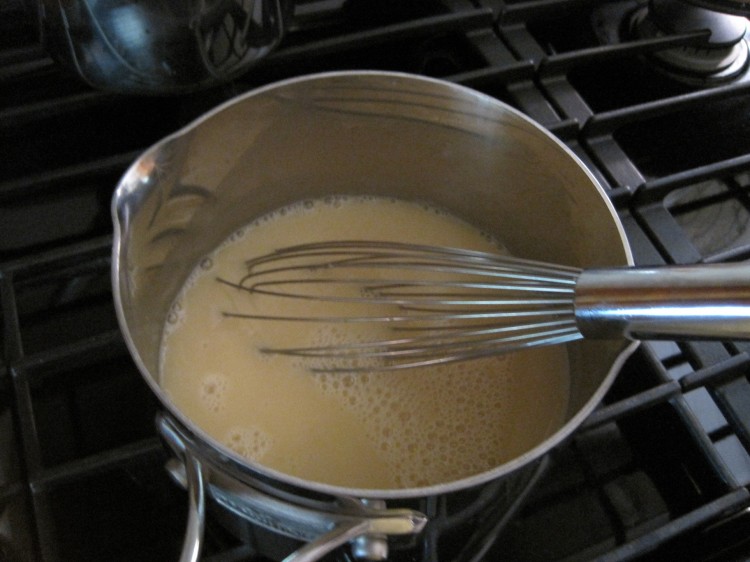
Starting to cook lemon sauce for the stuffed peppers

